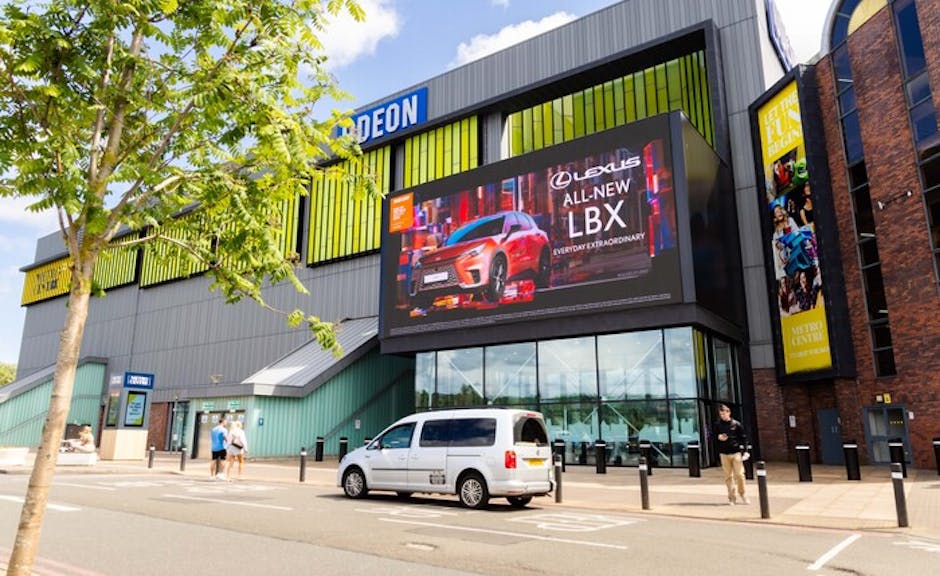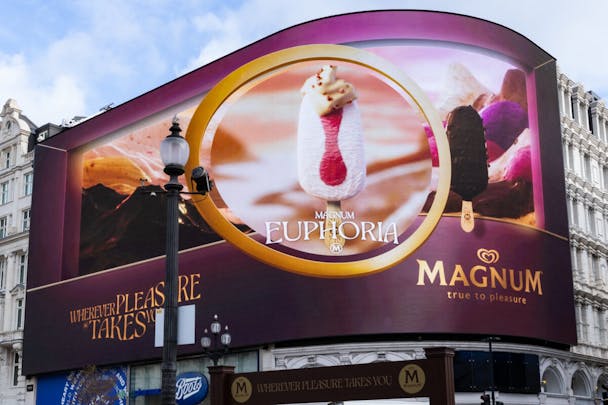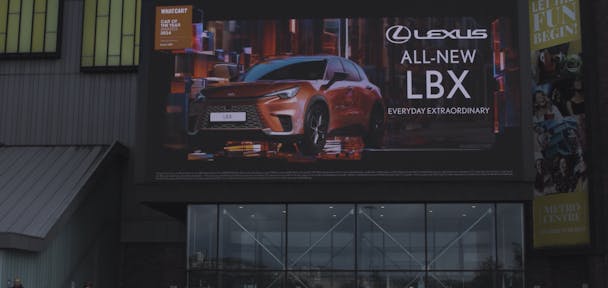Next-gen billboards: How 3D and IoT can be used to make OOH ads stand out
Technology is transforming how we see outdoor ads. 3D advertising has evolved from simple illusions to dynamic, interactive experiences. This shift opens up exciting possibilities for creating engaging and memorable campaigns. How can we leverage 3D technology to make our ads stand out? What innovative examples can inspire us to enhance our strategies?

We’ve all noticed how technology is transforming the way we see ads outside our homes. It’s no surprise to learn that one of the biggest developments in the advertising world over the past few years has been 3D. In its most recent ad spend forecast, Dentsu said it expects spending on digital out-of-home advertising to increase nearly 7% this year, in part thanks to “holographic projections and 3D technology” in the space.
Although 3D illusions have been around for as long as billboards themselves, the rise of digital technology has transformed what’s possible for out of home (OOH), taking it to new levels. What used to be static images have now become dynamic, interactive experiences that engage viewers like never before.

Let’s make ads that pop
There’s no doubt that 3D advertising captivates and holds attention in ways traditional ads simply can’t.
Magnum's new 3D OOH billboard campaign (see pic above) is a great example of using state-of-the-art technology to create captivating displays. The Pleasure Express 3D OOH creative kicks off the brand’s summer campaign, supporting the launch of NPD Magnum Euphoria Pink Lemonade and Magnum Chill Blueberry Cookie—two new flavors encouraging Pleasure Seekers to choose which world they want to explore and taste. Spanning iconic UK locations like Piccadilly Lights, the campaign is able to use 3D to immerse audiences in a memorable visual feast.
Physiologically we do notice disruptions in our environment. When a 3D advertisement alters our typical perception, it ignites curiosity and draws us in, compelling us to engage more deeply. So, if you’re walking down the street, and a billboard literally jumps out at you it will make you look.
Like Open Media’s Lexus 3D campaign ad for their new LBX vehicle, where we see the car literally drive out of the screen.

How to leave a lasting impression
Beyond just grabbing attention, 3D ads excel in immersive storytelling. They break free from the constraints of traditional 2D visuals, offering enriched experiences that allow brands to convey their narratives through dynamic, three-dimensional scenes.
An analysis of data by IPA (the UK-based Institute of Practitioners in Advertising) showed that ads that generate an above-average emotional response (therefore a deeper connection with the audience) can lead to a 23% increase in sales volume.
Embrace interactivity
Embracing 3D technology is a promising starting point for creating advertising experiences that are both innovative and impactful. What we're doing is transform how consumers interact with ads.
And it's important to have social in mind when you do that because they are more likely to be shared across platforms, amplifying the message more effectively than traditional formats. We should all be focusing on creating 3D ads that are highly shareable, optimizing their reach and impact in the digital landscape.
Last year Paramount unveiled their groundbreaking 3D autumn campaign, advertising their streaming platform, Paramount+. Created by the talented team at DOOH.com, the ad involved bringing to life snippets from key shows, famous faces and locations, jumping out of the screen at the viewers, creating a mind-bending experience and really showcasing the variety of their offering.
Take that a step further and incorporate interactive elements you allow viewers to engage with the ad. This can range from simple touch interactions to more complex augmented reality experiences that viewers can access via their smartphones. The more interactive the more they allow the viewer to ‘join in’ on the experience.
Connectivity: Bridging the gap between worlds
Connectivity is crucial for merging the physical and digital worlds. With the internet of things (IoT) and smart technology, we create real-time, seamless experiences.
Imagine a smart billboard that changes content based on who’s nearby, or an interactive OOH site synced with your smartphone for personalized updates. These innovations are reshaping out-of-home advertising, making it dynamic and engaging.
Smart billboards can change content based on the demographics of nearby viewers or interactive elements that sync with mobile devices.Stay ahead of the trends
It’s about envisioning new possibilities. OOH is a channel that’s open to the potential 3D technology and enhanced connectivity brings.
Last year, energy company OVO utilized programmatic buying for their campaign which tapped into real-time data from National Grid to automatically bid for ad space when the grid was greener and so displayed the campaign creative during this time. Not only was this an industry first but really put at the forefront the conversation, something which is on a lot of everyone’s agenda.
Discover five programmatic DOOH campaigns that rocked in 2023 here.
Real-time personalization
Programmatic OOH booking allows brands to tailor their message according to many outside factors. Digital billboards can change their content based on real-time data such as weather, time of day, or nearby events, ensuring that the message is always relevant. This tailored approach can help the campaign really speak to a consumer and in turn enhance how they engage with the ad. Again, by cutting through the noise a campaign can become extremely affective of grabbing the attention of consumers.
What does the future look like?
The future of OOH advertising is set to be incredibly dynamic and interactive, leveraging advanced technologies like augmented reality, real-time personalization, and responsive content.
Imagine billboards that adapt their messages based on weather, time, and audience demographics, or interactive touchscreens that invite passersby to engage directly with ads.
Integrating seamlessly with mobile devices, these ads will offer personalized experiences, from virtual try-ons to real-time updates.
In terms of sustainability, the industry is also embracing data-driven approaches to reduce emissions and minimize carbon footprint. By optimizing placement and energy usage through sophisticated analytics, outdoor advertising can contribute to environmental goals while maintaining its effectiveness in engaging audiences. This shows the industry's proactive approach to sustainability, aligning with broader societal concerns and enhancing the overall impact of out-of-home advertising in the future.
Be part of the revolution
Right now, 3D offers brands a chance to stand out. OOH is pushing boundaries, becoming more interactive while media buying becomes much personalized and specific. And because of that, it’s transforming the landscape. It’s an exciting place to be.

